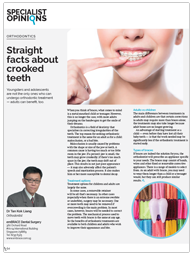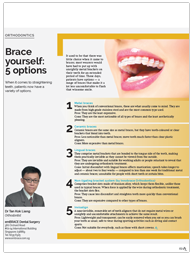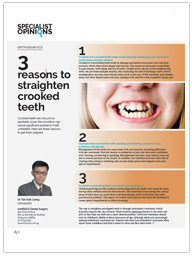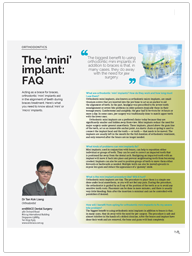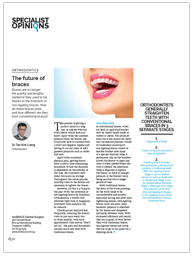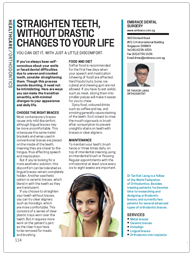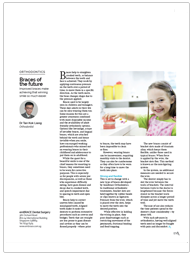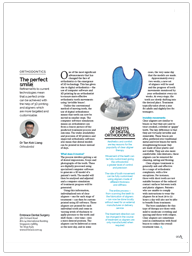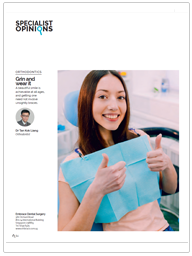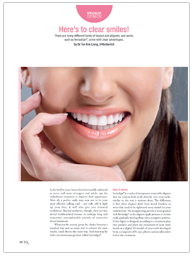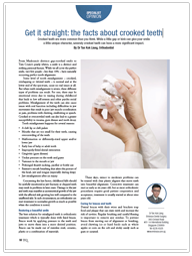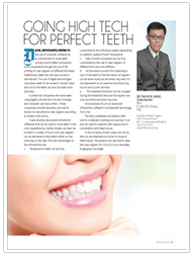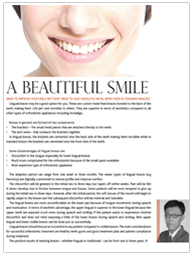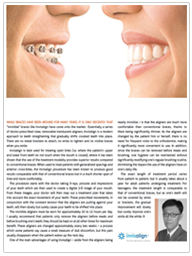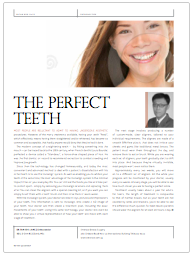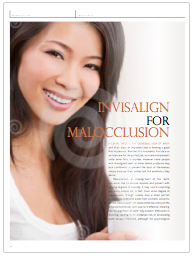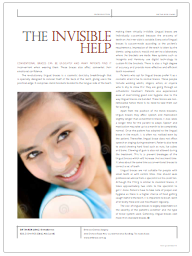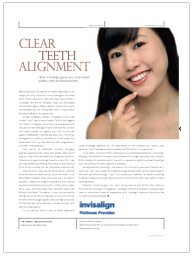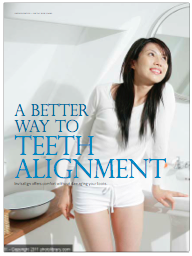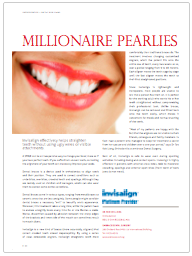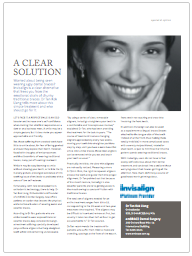While braces have been around for many years, it is only recently that "Invisible" Braces like Invisalign have come onto the market.
Essentially a series of doctor-prescribed clear, removable translucent aligners, Invisalign is a modern approach to teeth straightening that gradually shifts crooked teeth into place. There are no metal brackets to attach, no wires to tighten and no visible braces when you smile.
Invisalign is best used for treating open bites (i.e. where the patient’s upper and lower front teeth do not touch when the mouth is closed), where it has been shown that the use of the treatment modality provides superior results compared to conventional braces. When used to treat patients with generalised spacings and anterior cross-bites, the Invisalign procedure has been known to produce good results comparable with that of conventional braces but in a much shorter span of time and more comfortably.
The procedure starts with the doctor taking X-rays, pictures and impressions of your teeth which are then used to create a digital 3-D image of your mouth. From these images, your doctor will then map out a treatment plan that takes into account the exact movement of your teeth. These prescribed movements, in conjunction with the constant tension that the aligners are putting against your teeth, will then slowly but surely cause your teeth to be shifted into place.
The invisible aligners must be worn for approximately 20 to 22 hours per day. I usually recommend that patients only remove the aligners before meals and before brushing one’s teeth; they should be kept on at all other times for maximum benefit. These aligners are changed approximately every two weeks – a process which some patients say cause a small measure of dull discomfort, but this pain usually disappears when the patient wakes up the next day.
One of the main advantages of using Invisalign – aside from the aligners being nearly invisible – is that the aligners are much more comfortable than conventional braces, thanks to them being significantly thinner. As the aligners are changed by the patient him or herself, there is no need for frequent visits to the orthodontist, making it significantly more convenient to use. In addition, since the braces can be removed before meals and brushing, oral hygiene can be maintained without significantly modifying one’s regular brushing routine, minimising the impact the use of the aligners have on one’s daily life.
The exact length of treatment period varies from patient to patient, but it usually takes about a year for adult patients undergoing treatment. For teenagers, the treatment length is comparable to that of conventional braces, but as one’s teeth will not be covered by wires or brackets, the gradual improvement will slowly but surely improve one’s smile all the while.

